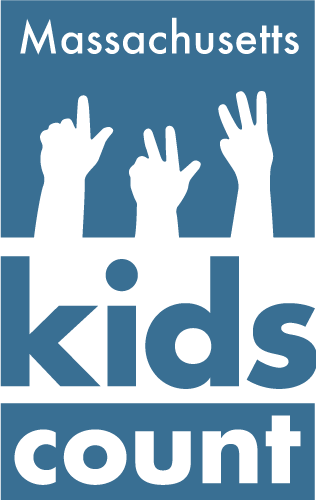Kids
Recent
Family Child Care Programs: A Primer
Family child care (FCC) programs are a vital piece of the early education and care sector in Massachusetts that disproportionately support the Commonwealth’s highest need ...
Read More →
How Baby Bonds Could Reduce Massachusetts’ Growing Wealth Gap
Across Massachusetts, racial wealth gaps are among the widest in the country. Structural barriers prevent or challenge households of color from building assets that could ...
Read More →
How Much Will Each District Benefit from the New Child & Dependent Tax Credit?
The proposed Child and Family Tax Credit would help families by providing a refundable credit each year for each child under 13 and dependent adults ...
Read More →

Kids Count Data Center
MassBudget is home to KIDS COUNT in Massachusetts, a national and state-by-state effort funded by the Annie E. Casey Foundation to track and improve the well-being of children across the United States. With these data, state organizations provide policy analysis based on evidence and shine a spotlight on pressing issues in order improve programs and policies for children and families.
ALL KIDS REPORTS
Statement on Reopening the Commonwealth
Marie-Frances Rivera
May 18, 2020
COVID-19 Education Health Jobs & the Economy Kids Press Release Taxes
Read the full statement by Marie-Frances Rivera, president of the Massachusetts Budget and Policy Center (MassBudget), in response to the Governor's Reopening Massachusetts plan amid ...
Read More →
FAQ: Status of the Mass. Early Education Sector During and Beyond the Coronavirus Outbreak
Introduction Quality early education and care (EEC) is not only critical for helping young children to learn and grow, it’s also vital to our economy ...
Read More →
That’s A Relief Part II: Federal Fiscal Relief for Community Development in the CARES Act
Read That’s A Relief Part I: Federal Fiscal Relief to Massachusetts in Recently-Passed Legislation here. The federal Coronavirus Aid, Relief, and Economic Security Act (“CARES Act,” or ...
Read More →
That’s A Relief Part I: Federal Fiscal Relief to Massachusetts in Recently-Passed Legislation
Learn what federal relief though the CARES Act, the Coronavirus Relief Fund, and other recently passed legislation means for the Commonwealth during the public health ...
Read More →
Testimony to the Economic Roundtable: We must ensure collective well-being and economic security in the Commonwealth
Marie-Frances Rivera
April 14, 2020
COVID-19 Education Health Jobs & the Economy Kids Taxes Testimony
Read the full testimony from our President, Marie-Frances Rivera, for the Massachusetts Legislature's April Virtual Economic Roundtable, originally scheduled for April 7, 2020.
Read More →
Keeping Promises and Investing in Our Recovery: Why We Must Fund the Student Opportunity Act
With statewide school closures, we must ensure that children are safe, fed, and do not fall behind. Learn how COVID-19 is impacting the Student Opportunity ...
Read More →
Spotlight on Equity: Testing and Treatment for Everyone, Regardless of Income, Health Insurance Coverage, or Immigration Status
Photo courtesy of Creative Commons. The novel coronavirus (COVID-19) pandemic exposes disparities in our health care system. It also highlights how interconnected we are to each ...
Read More →
How Should Mass. Respond to the COVID-19 Crisis?
Marie-Frances Rivera
March 17, 2020
Blog COVID-19 Education Health Jobs & the Economy Kids Press Release Taxes
We Must Provide Robust Economic Relief and Recovery for Vulnerable Populations and Children in Massachusetts Policy is the lever that we can pull to bring ...
Read More →
Why the Count Counts: Federal Funding and the 2020 Census
Our latest brief, Why the Count Counts, outlines the generational impacts a complete and accurate count of every Massachusetts resident will have in the 2020 ...
Read More →
Opportunity Delayed: FY 2021 Governor’s Budget for K-12 Funding Falls Short by $74M for Low-Income Kids
As part of implementing the Commonwealth's new school funding law, the Student Opportunity Act (SOA), the Governor proposed increasing Chapter 70 aid by $303.5 million ...
Read More →
Case Study: Increasing Quality After-School Opportunities in Salem, Massachusetts
Without sufficient funding, communities across the Commonwealth face challenges in helping all students, particularly those most in need of additional support, gain access to affordable, ...
Read More →
FY 2021 BUDGET PREVIEW: Delivering on the K-12 Education Funding Overhaul & the Student Opportunity Act (SOA)
Now that the state has revamped its education funding formula, how will lawmakers fund these changes in this first year of implementation?
Read More →
FY 2021 BUDGET PREVIEW: Will the Governor reboot his dependent deduction proposal or take a more targeted approach?
Will the Governor again propose to double the state's dependent deduction, which wasn't adopted by the Legislature, or will state lawmakers provide more targeted tax ...
Read More →
Impact of the Increase in the Massachusetts Minimum Wage to $12.75
These infographics show the impacts of the increase in the Massachusetts minimum wage on January 1, 2020, from $12 to $12.75 per hour.
Read More →






